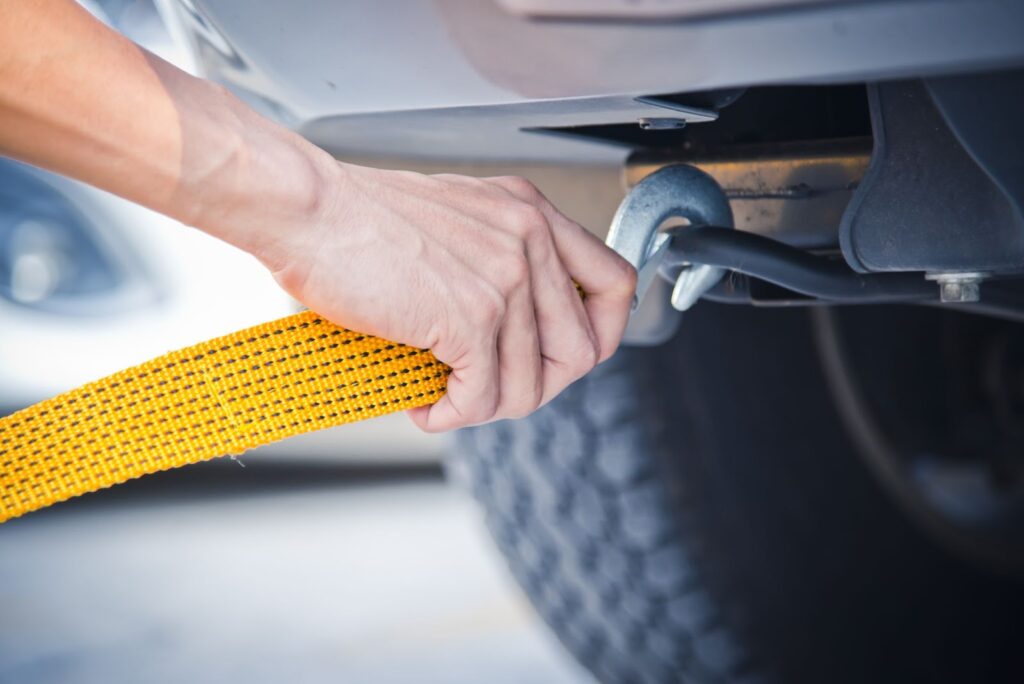The 4.5m maximum distance rule: Ten top tips for towing a car

Knowing how to tow a vehicle legally and safely is essential for all motorists, experts say.
The car leasing experts at LeaseCar.uk are educating drivers on how to safely tow a vehicle in the event of a breakdown.
Whether a car is broken down or in some instances is causing an obstruction in the road, towing it can be quite tricky so it’s useful to know how to do so.
Not only do drivers need an appropriate rope or bar and the correct ‘On Tow’ signage but they also need patience and great reactions for a smooth and comfortable journey.
A spokesperson for LeaseCar.uk said: “If the situation does arise in which a driver needs to tow a vehicle we feel as though it’s important that they can do this safely.
“Towing a vehicle isn’t as simple as it may seem and drivers will need to adapt their driving style and make the necessary checks before trying to tow a vehicle.
“It’s important that both drivers work collaboratively by using their brakes effectively, signalling appropriately, and adhering to a safe speed.”
Here are LeaseCar.uk’s top ten tips for towing:
On tow sign
An ‘On Tow’ sign must be placed in the back window of the vehicle being towed to make other road users aware.
Use the right rope/bar
The rope or bar being used must be able to meet the weight limit of the vehicle being towed and before attaching the rope/bar ensure that it has no defects. In order to attach the rope or bar, you will also need two towing eyes, which are metal hooks that allow the rope/bar to be fitted.
Distance
When the vehicles are being towed with just a rope or bar the maximum distance between each other can be 4.5m. There is no minimum distance but there must be enough space between the two cars to avoid any accidental damage.
Ignition
The ignition of the car being towed should be on in order to disable the steering wheel lock. Even if the car is dead the ignition should still be on, remember to take caution with vehicles that have power steering as it will be harder to turn the steering wheel.
Gear
Vehicles should be left in neutral when being towed. This is so that the wheels can move freely. If the car is left in gear, the wheels won’t turn properly and this could cause damage to the engine. Also, remember to take the handbrake off before you start.
Signals
As well as using indicators and the emergency light, adopting a hand gesture or a horn signal will help the driver behind know when you’re about to come to a stop.
Acceleration
For the driver who is towing, accelerating slowly is advisable in order to avoid sudden jolts for the driver behind. Careful acceleration will also stop any damage to the rope or bar.
Corners
Similar to the acceleration, it is best to take corners slow and steady to make it as easy as possible for the car being towed. Take corners wider than usual to allow the car behind adequate space and to ensure that they are not drifting into another lane.
Tension
The driver who is being towed must keep an eye on the rope at all times – if the rope begins to slack, apply the brakes gently to reintroduce some tension. Again, this will stop any uncomfortable jolts and snags.
Automatic and electric
Drivers should tow with caution when it comes to automatic or electric vehicles. Electric cars for example do not have a neutral position, so when the wheels are turning they are still connected to the motor, which could cause lasting damage. Automatics have a similar problem as some cannot assume a neutral position when the car is turned off, it is always best to refer to the car’s manual.




